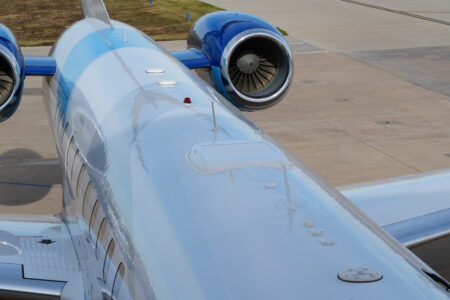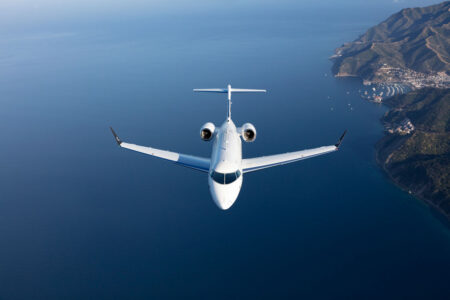Cobham Aviation Services is modifying four former business jets at Adelaide Airport in Australia to become some of the world’s most advanced civil search and rescue aircraft.
The company is integrating advanced sensor equipment and mission systems in to four Bombardier Challenger CL-604 aircraft in South Australia on behalf of the Australian Maritime Safety Authority (AMSA).
Under a 12-year, A$640m-contract (US$450m) Cobham will own, operate and maintain the Challengers for AMSA from bases in Perth, Cairns and Melbourne, and they will be ready to fly at 30 minutes’ notice by day and an hour at night on rescue missions of up to eight hours. A fourth aircraft will act as a ready reserve.
AMSA is the government authority responsible for coordinating search and rescue across Australia and its maritime zones, which together cover 10% of the earth’s surface. In 2015, the agency coordinated 429 rescues, saving an estimated 219 lives on land and at sea. The Challengers will be a vital part of the AMSA system, locating people in distress, dropping survival equipment and coordinating surface rescue efforts.
The aircrafts’ sensor kits will include advanced technology such as a Wescam MX-15 electro-optical turret with infra-red and video sensors, Selex 5000 maritime surveillance radar, Direction Finding (DF) radio homing equipment and Inmarsat satellite communications.
The aircraft will also carry lifesaving stores such as self-locating datum marker buoys, life rafts, dewatering pumps, smoke markers, sea dye and packages of medical supplies, food, water and communications equipment, to be air-dropped through a modified rear door that can be opened in flight.
An AMSA spokesman said the Challenger would provide the organization with “a capability that is quite different to the current platforms”.
He added, “It has a significantly higher transit speed and endurance, and will be able to spend a longer period on the scene of a SAR task before needing to return to base.”
Cobham is scheduled to test the first modified aircraft by early July before service entry in Perth in early August and Cairns and Melbourne later in the year.




